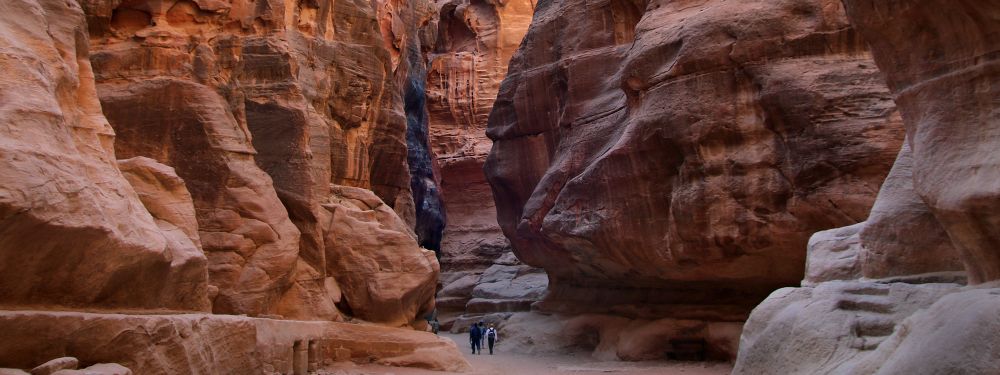

The history of Petra, an archaeological site in Jordan's southwestern desert, dates back to around 300 B.C., where it was once the flourishing capital of the Nabataean Kingdom. This ancient city is renowned for its intricate rock-cut architecture and water conduit system. Petra's appeal to tourists stems from its combination of historical significance, archaeological marvels, and natural beauty.
One of the most captivating features of Petra is the Siq, a narrow gorge that serves as the traditional main entrance to the city. Stretching approximately 1.2 kilometers (0.75 miles) and surrounded by towering cliffs reaching heights up to 80 meters (262 feet), the Siq is a marvel of natural and man-made grandeur.
Petra's tourism history is deeply entwined with the Siq's sense of mystery and allure. Although inhabited and visited for thousands of years, it was Swiss explorer Johann Ludwig Burckhardt who reintroduced Petra to the Western world in 1812. Travelers and scholars flocked to Jordan to witness the Siq and Petra's iconic facade, Al-Khazneh ('The Treasury'). By the early 20th century, Petra had started to gain popularity as a must-see destination for tourists from around the globe.
In 1985, Petra was designated a UNESCO World Heritage Site, spurring increased preservation efforts and international attention. The Siq and the city of Petra became a symbol of Jordan and featured in multiple films, most notably 'Indiana Jones and the Last Crusade' in 1989, which heightened public intrigue and fascination.
With the advancement of tourism infrastructure, global visitors have easier access to Petra and the Siq, with the Jordanian government and various entities providing amenities and guided tours to enhance the visitor experience.
In recent years, there has been a focus on sustainable tourism, with efforts to ensure that visitors to the Siq and Petra have minimal impact on the environment and archaeological sites. The introduction of electric vehicles to transport tourists within Petra aims to reduce the carbon footprint and protect the integrity of the Siq and the broader city.
Another emerging trend is experiential travel, where tourists seek authentic and engaging experiences in Petra. This includes night tours of the Siq, where the pathway is illuminated by thousands of candles, and the city's monuments are showcased with enchanting light shows. Adventure tourism is also gaining momentum, with more visitors opting for hikes and exploration opportunities around Petra's vast, rugged landscapes.
Travelers are increasingly combining their visits to the Siq with other cultural experiences within Jordan, such as the Roman ruins of Jerash, the Dead Sea, and Wadi Rum desert adventures, making Petra a pivot of Jordan's cultural and adventurous tourism.
As the gateway to one of the world's most treasured archaeological sites, the Siq continues to mesmerize visitors with its historical majesty and enigmatic beauty. Balancing the demands of growth in tourism with the need to preserve Petra's heritage is an ongoing challenge. Still, the efforts being made ensure that the Siq remains a timeless draw for explorers and history enthusiasts for generations to come.